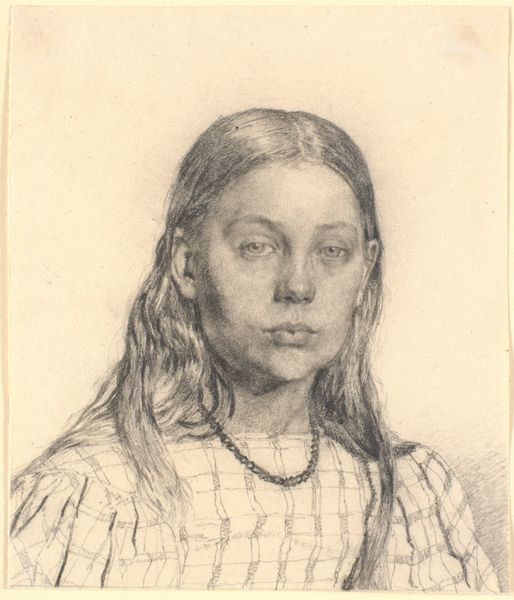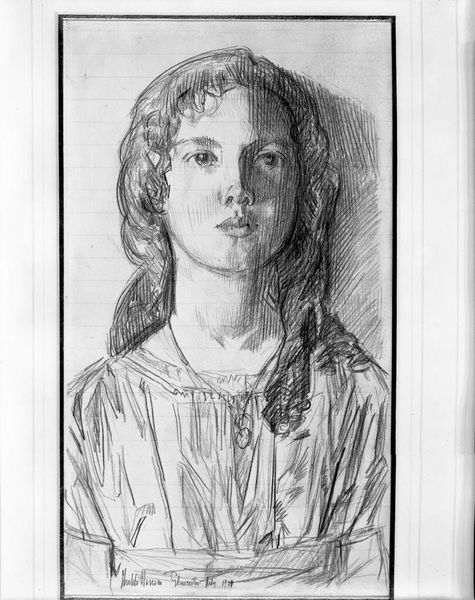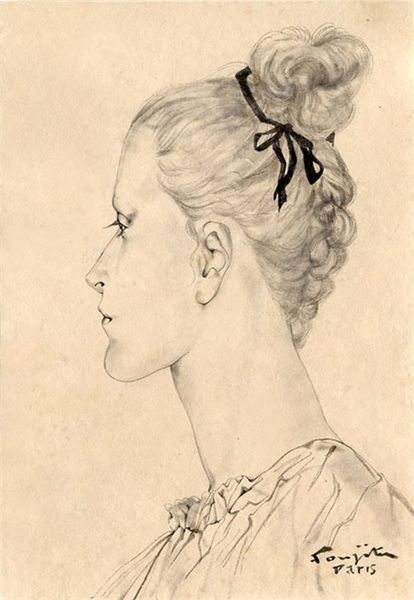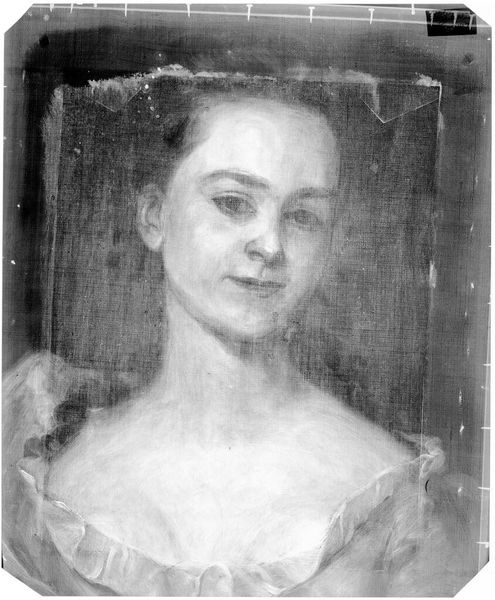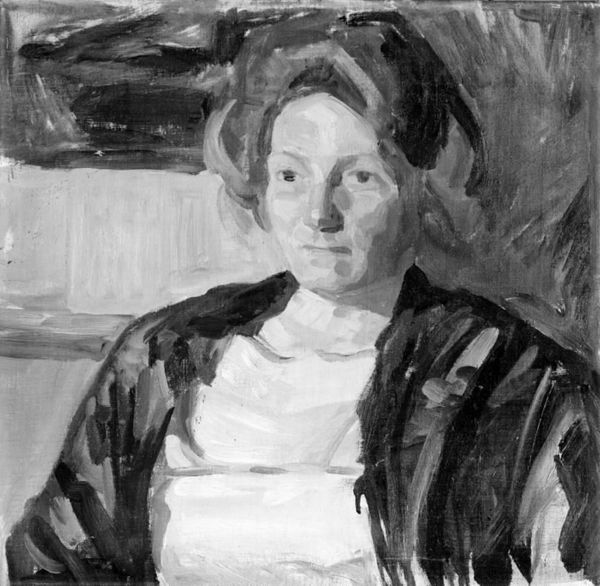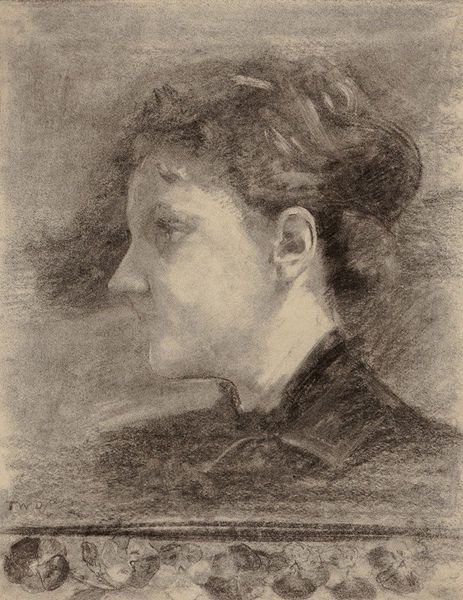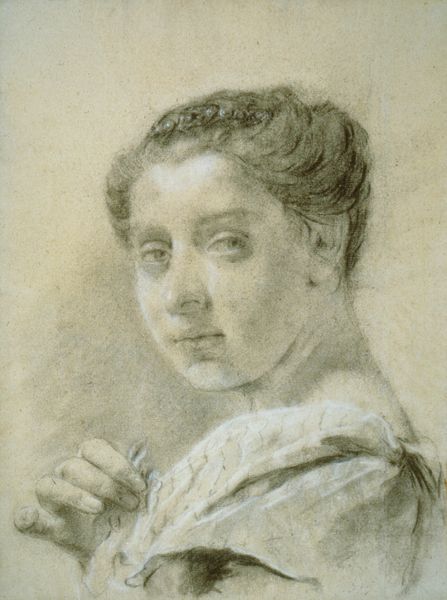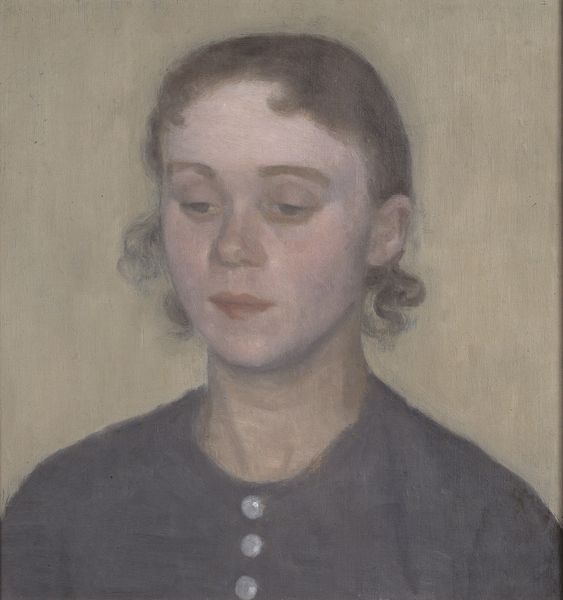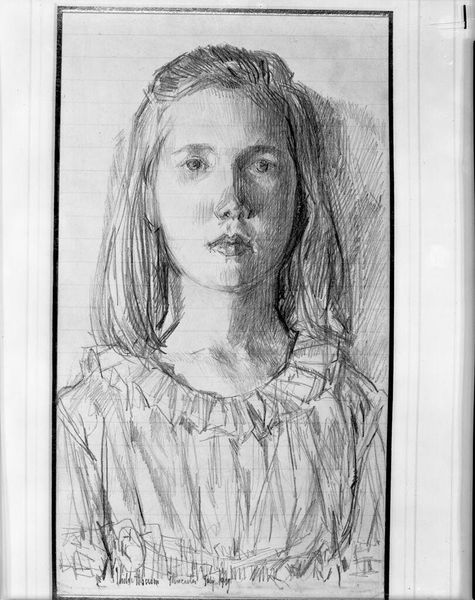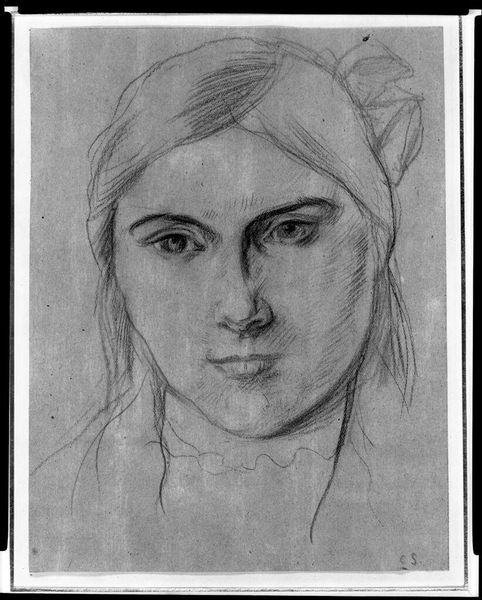
painting, oil-paint
#
portrait
#
portrait
#
painting
#
oil-paint
#
charcoal drawing
#
portrait drawing
#
realism
Dimensions: 18 cm (height) x 17.5 cm (width) (Netto)
Editor: This is "Studie af en ung pige," or "Study of a Young Girl," painted in 1876 by August Jerndorff, using oil paint. It’s quite striking. The monochrome palette really focuses your attention on the young woman's expression and her almost melancholic gaze. How do you interpret this work in the context of its time? Curator: Well, let's consider the role of portraiture in 19th-century Denmark. It was a key way for the bourgeoisie to assert their status. However, this isn't a grand, commissioned portrait, is it? It's a "study." What does that suggest to you about its intended audience and function? Editor: It makes it feel more intimate, more like a private moment captured, rather than a public statement. Maybe something produced for a more personal or educational purpose. Curator: Precisely. And think about the Realism movement Jerndorff was part of. These artists often turned away from idealized representations, seeking instead to portray everyday life and ordinary people. Is there a social commentary here, a democratization of art by focusing on this young girl? Could this also function as an intimate display within a specific family? Editor: That's fascinating! I hadn't thought about it as a potential commentary on social status and the shift toward Realism and away from the societal expectation for artwork at that time. It encourages more interpretation. Curator: It's a glimpse into how artists were negotiating new ways of seeing and representing the world and their position. The painting also hints at the burgeoning role of women as subjects and perhaps, someday, creators of art. Editor: That really shifts my perspective on what I initially saw as simply a somber portrait. I'm seeing it now as a work with social and political undertones regarding status, artistic conventions, and the depiction of women in that period. Curator: Exactly, seeing art as not just aesthetic objects but cultural and historical documents – it's truly enriching!
Comments
No comments
Be the first to comment and join the conversation on the ultimate creative platform.
